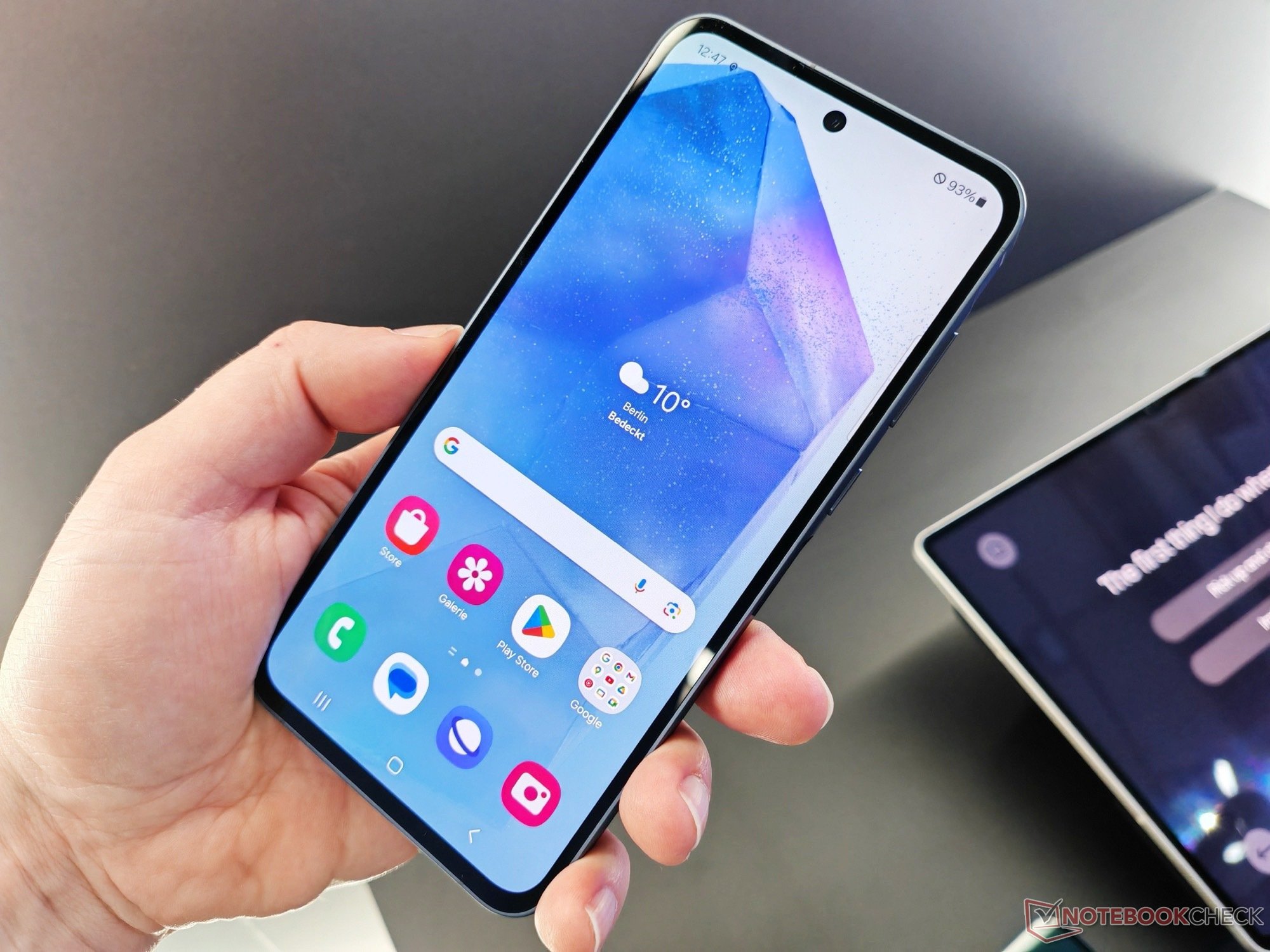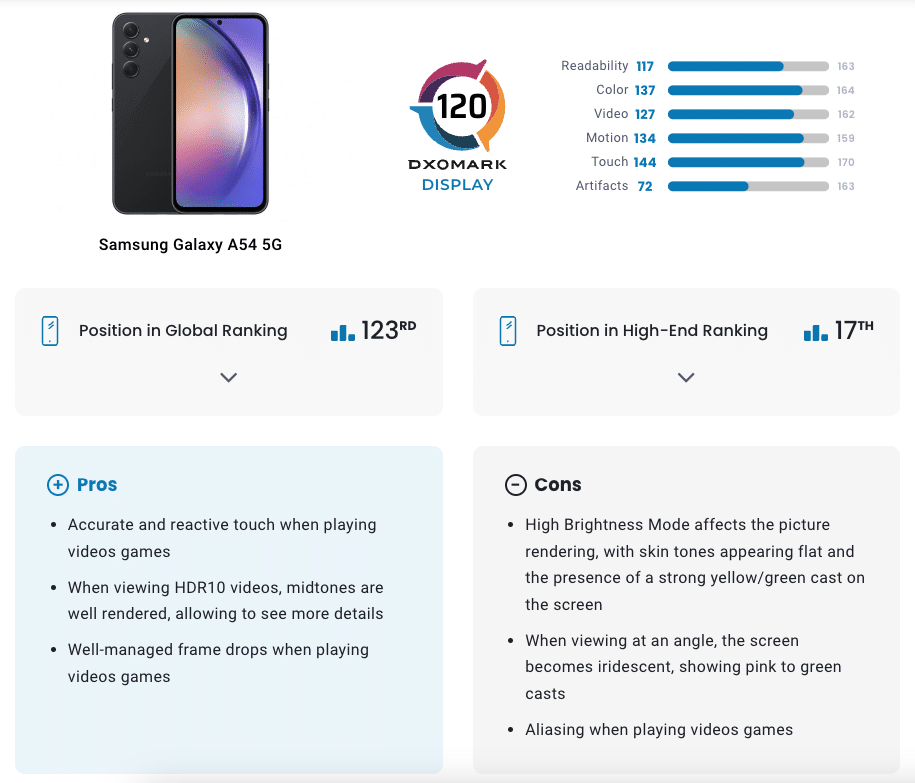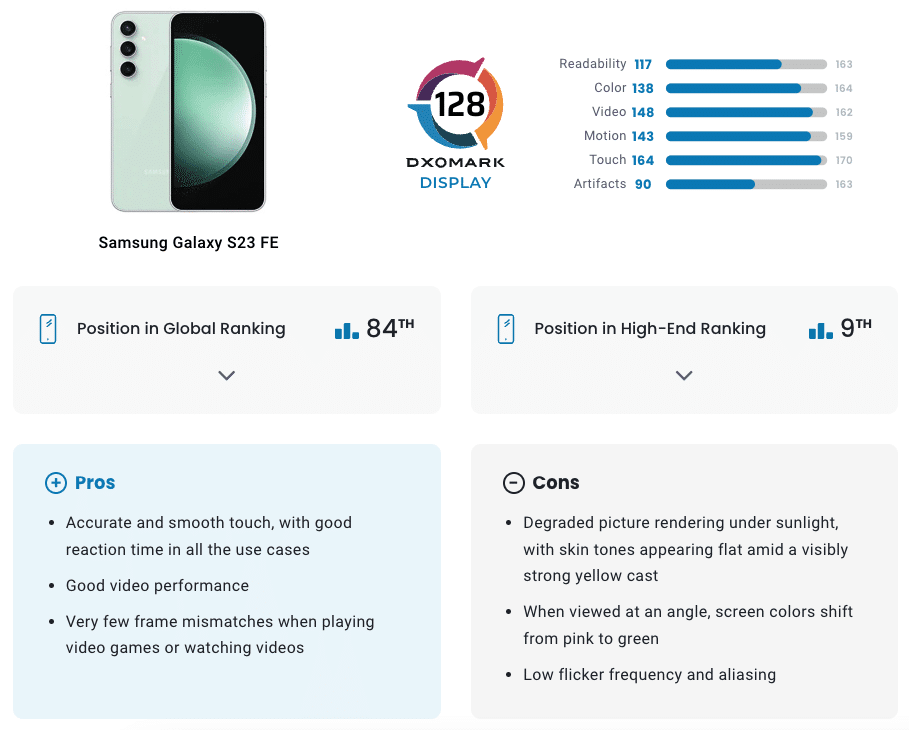Samsung's new Galaxy A55 has a few improvements compared to the Galaxy A54. If you just look at the spec sheet, you might think that the screen isn't one of them. Galaxy A55 is equipped with a 6.6" screen, slightly larger than the 6.4" screen of the previous generation. In return, the pixel density is lowered. In addition, these two phones both have Super AMOLED screens with HDR10+, 120Hz refresh rate, and 1000 nit brightness, at least in theory.

It turns out that the Galaxy A55's screen is much superior to the Galaxy A54's and is also significantly brighter. In fact, according to tests conducted by DxOMark, the Galaxy A55's screen is the best in its class, beating even the Galaxy S23 FE. Accordingly, the Galaxy A55's screen ranked first, the Galaxy S23 FE ranked ninth and the Galaxy A54 ranked 17th. On the global ranking scale, the Galaxy A55 ranked 27th, beating Apple's iPhone 14 Plus. Do you know where the Galaxy A54 stands on the global ranking scale? 123. Of Galaxy S23 FE? 84.


That's right! According to DxOMark, the Galaxy A55's screen is even better than that of the expensive Galaxy S23 FE even though the Galaxy S23 FE has a higher screen brightness on paper. Why is that?

Samsung went above and beyond what they promised
How is the Galaxy A55's 1000-nit Super AMOLED display so good? What is the secret to beating even the Galaxy S23 FE - which has a panel reaching 1450 nit brightness (according to Samsung) -?
DxOMark tests show that the Galaxy S23 FE's screen has a maximum brightness of 1421 nits. Meanwhile, the Galaxy A55's screen can reach a brightness of 1638 nits, much higher than what Samsung lists.
Even the Galaxy A54 beat the number announced by the company in DxOMark tests, reaching 1344 nits. Very impressive! But that's not enough to beat the Galaxy S23 FE.
In short, the Galaxy A55's screen is much better than what Samsung advertises. This shows that technical specifications sometimes do not reflect real-world user experiences.
 SamFw
SamFw

